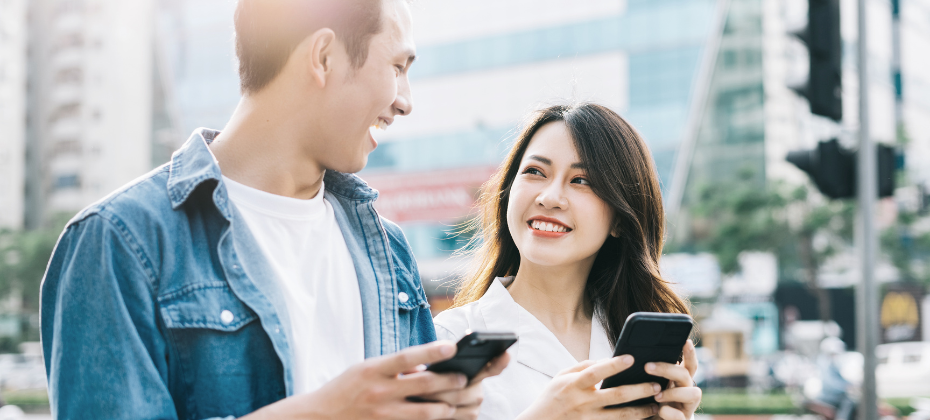Fintech
Fintech

This article was updated on January 30, 2024. Income verification is a critical step in determining a consumer’s ability to pay. The challenge is verifying income in a way that’s seamless for both lenders and consumers. While many businesses have already implemented automated solutions to streamline operations, some are still relying on manual processes built on older technology. Let’s take a closer look at the drawbacks of traditional verification processes and how Experian can help businesses deliver frictionless verification experiences. The drawbacks of traditional income verification Employment and income verification provides lenders with greater visibility into consumers’ financial stability. But it often results in high-touch, high-friction experiences when done manually. This can be frustrating for both lenders and potential borrowers: For lenders: Manual verification processes are extremely tedious and time-consuming for lenders as it requires physically collecting and reviewing documents. Additionally, without reliable income data, it can be difficult for lenders to accurately determine a consumer’s ability to pay, leading to higher origination risk. For borrowers: Today’s consumers have grown accustomed to digital experiences that are fast, simple, and convenient. A verification process that is slow and manual may cause consumers to drop off altogether. How can this process be optimized? To accelerate the verification process and gain a more complete view of consumers’ financial stability, lenders must look to automated solutions. With automated income verification, lenders obtain timely income reports to accurately verify consumers’ income in minutes rather than days or weeks. Not only does this allow lenders to approve more applicants quickly, but it also enables them to devote more time and resources toward improving their strategies and enhancing the customer experience. The right verification solution can also capture a wider variety of income scenarios. With the click of a button, consumers can give lenders permission to access their financial accounts, including checking, savings, 401k, and brokerage accounts. This creates a frictionless verification experience for consumers as their income information is quickly extracted and reviewed. Retrieving data directly from financial accounts also provides lenders with a fuller financial picture of consumers, including those with thin or no credit files. This helps increase the chances of approval for underserved communities and allows lenders to expand their customer base without taking on additional risk.1 Learn more 1 Experian Income Verification Product Sheet (2017).

Financial institutions, merchants, and e-commerce platforms are no strangers to fraud, especially in the realm of payments. With the rise of digital currency, fraudsters are becoming more inventive, making it increasingly difficult to detect and prevent payment fraud. In this blog post, we discuss payment fraud and ways to protect your organization and your customers. What is payment fraud? Payment fraud occurs when someone uses false or stolen payment information to make a purchase or transaction. The most common types of payment fraud include: Phishing: Through emails or text messages, scammers disguise themselves as trustworthy sources to lure recipients into sharing their personal information, such as account passwords and credit card numbers. Card not present fraud: This type of fraud is one of the most challenging forms of payment fraud to detect and prevent. It occurs when a criminal uses a stolen or compromised credit card to make a purchase online, in-person, or by other means where the card is not physically present at the time of the transaction. Account takeover fraud: This type of fraud occurs when fraudsters gain unauthorized access to an individual’s account and carry out fraudulent transactions. They take over accounts by gathering and using personal or financial details to impersonate their victims. The rise of online payment fraud Online payments have become a prime destination for fraudsters as more consumers choose to store card details and make purchases digitally. As a result, consumers believe that it’s the responsibility of businesses to protect them online. If there’s a lack of trust and safety, consumers will have no problem switching providers, leading to declines in customer loyalty and monetary losses for organizations. No matter the type of payment fraud, it can result in devastating consequences for your organization and your customers. According to Experian’s 2024 U.S. Identity and Fraud Report, fraud scams and bank fraud schemes resulted in more than $458 billion in losses globally. On the consumer side, 52 million Americans had fraudulent charges on their credit or debit cards, with unauthorized purchases exceeding $5 billion. Given these findings, it’s more important than ever to implement robust online payment fraud detection and prevention measures. How can payment fraud be detected and prevented? Approaches to payment fraud detection and prevention have evolved over time. Some of the current and emerging trends include: Additional layers of security: Security measures like two-factor authentication, a CVV code, and a billing zip code can help verify a customer’s identity and make it more difficult for fraudsters to complete a transaction. Enhanced identity verification: A credit card owner verification solution, like Experian LinkTM, matches the customer identity with the credit card being presented for payment, allowing businesses to make better decisions, reduce false declines, and protect legitimate customers. Artificial intelligence (AI) and machine learning: AI-powered models and machine learning algorithms can identify patterns consistent with fraudulent activity in real time, resulting in proactive fraud prevention and reduced financial losses. Behavioral analytics: Using behavioral analytics to monitor user behavior, such as how they navigate a website or interact with the payment process, can help identify inconsistencies and potential fraud. Token-based authentication: Tokenization protects card information by replacing sensitive data with a unique identifier (token), which makes data breaches less damaging. How Experian can help As the payments landscape continues to evolve, so do fraudsters. Experian offers a wide range of payment fraud analytics, account takeover fraud prevention and fraud management solutions that allow you to better detect and prevent payment fraud. Your organization’s reputation and your customers’ trust shouldn’t be compromised. To learn more, visit us today. Learn more This article includes content created by an AI language model and is intended to provide general information.

This article was updated on April 23, 2024. Keeping your organization and consumers safe can be challenging as cybercriminals test new attack vectors and data breaches continually expose credentials. Instead of relying solely on usernames and passwords for user identity verification, adding extra security measures like multi-factor authentication can strengthen your defense. What is multi-factor authentication? Multi-factor authentication, or MFA, is a method of authenticating people using more than one type of identifier. Generally, you can put these identifiers into three categories based on the type of information: Something a person knows: Usernames, passwords, and personal information are common examples of identifiers from this category. Something a person has: These could include a phone, computer, card, badge, security key, or another type of physical device that someone possesses. Something a person is: Also called the inherence factor, these are intrinsic behaviors or qualities, such as a person's voice pattern, retina, or fingerprint. The key to MFA is it requires someone to use identifiers from different categories. For example, when you withdraw money from an ATM, you're using something you have (your ATM card or phone), and something you know (your PIN) or are (biometric data) to authenticate yourself. Common types of authenticators Organizations that want to implement multi-factor authentication can use different combinations of identifiers and authenticators. Some authenticator options include: One-time passwords: One-time passwords (OTPs) can be generated and sent to someone's mobile phone via text to confirm the person has the phone or via email. There are also security tokens and apps that can generate OTPs for authentication. (Something you know.) Knowledge-based authentication: Knowledge-based authentication (KBA) identity verification leverages the ability to verify account information or a payment card, “something you have,” by confirming some sequence of numbers from the account. (Something you know.) Security tokens: Devices that users plug into their phone or computer, or hold near the device, to authenticate themselves. (Something you have.) Biometric scans: These can include fingerprint and face scans from a mobile device, computer, or security token. (Something you are.) Why MFA is important It can be challenging to keep your users and employees from using weak passwords. And even if you enforce strict password requirements, you can't be sure they're not using the same password somewhere else or accidentally falling for a phishing attack. In short, if you want to protect users' data and your business from various types of attacks, such as account takeover fraud, synthetic identity fraud, and credential stuffing, you’ll need to require more than a username and password to authenticate users. That’s where MFA comes in. Because it uses a combination of elements to verify a consumer’s identity, if one of the required components in a transaction is missing or supplied incorrectly, the transaction won’t proceed. As a result, you can ensure you’re interacting with legitimate consumers and protect your organization from risk. LEARN MORE: Explore our fraud prevention solutions. How to provide a frictionless MFA experience While crucial to your organization, in-person and online identity verification shouldn’t create so much friction that legitimate consumers are driven away. Experian's 2023 U.S. Identity and Fraud Report found that 96 percent of consumers view OTPs as convenient identity verification solutions when opening a new account. An increasing number of consumers also view physical and behavioral biometrics as some of the most trustworthy recognition methods — 81 and 76 percent, respectively. To create a low friction MFA experience that consumers trust, you could let users choose from different MFA authentication options to secure their accounts. You can also create step-up rules that limit MFA requests to riskier situations — such as when a user logs in from a new device or places an unusually large order. To make the MFA experience even more seamless for consumers, consider adding automated identity verification (AIV) to your processes. Because AIV operates on advanced analytics and artificial intelligence, consumers can verify their identities within seconds without physical documentation, allowing for a quick, hassle-free verification experience. How Experian powers multi-factor authentication Experian offers various identity verification and risk-based authentication solutions that organizations can leverage to streamline and secure their operations, including: Experian’s CrossCore® Doc Capture confidently verifies identities using a fully supported end-to-end document verification service where consumers upload an image of a driver’s license, passport, or similar directly from their smartphone. Experian’s CrossCore Doc Capture adds another layer of security to document capture with a biometric component that enables the individual to upload a “selfie” that’s compared to the document image. Experian's OTP service uses additional verification checks and identity scoring to help prevent fraudsters from using a SIM swapping attack to get past an MFA check. Before sending the OTP, we verify that the number is linked to the consumer's name. We also review additional attributes, such as whether the number was recently ported and the account's tenure. Experian's Knowledge IQSM offers KBA with over 70 credit- and noncredit-based questions to help you engage in additional authentication for consumers when sufficiently robust data can be used to prompt a response that proves the person has something specific in their possession. You can even configure it to ask questions based on your internal data and phrase questions to match your brand's language. Learn more about how our multi-factor authentication solutions can help your organization verify consumer identities and mitigate fraud. Learn about our MFA solutions

This article was updated on November 9, 2023. Fraud – it’s a word that comes up in conversations across every industry. While there’s a general awareness that fraud is on the rise and is constantly evolving, for many the full impact of fraud is misunderstood and underestimated. At the heart of this challenge is the tendency to lump different types of fraud together into one big problem, and then look for a single solution that addresses it. It’s as if we’re trying to figure out how to un-bake a terrible cake instead of thinking about the ingredients and the process needed to put them together in the first place. This is the first of a series of articles in which we’ll look at some of the key ingredients that create different types of fraud, including first party, third party, synthetic identity, and account takeover. We’ll talk about why they’re unique and why we need to approach each one differently. At the end of the series, we’ll get a result that’s easier to digest. I had second thoughts about the cake metaphor, but in truth it really works. Creating a good fraud risk management process is a lot like baking. We need to know the ingredients and some tried-and-true methods to get the best result. With that foundation in place, we can look for ways to improve the outcome every time. Let’s start with a look at the best known type of fraud, third party. What is third-party fraud? Third-party fraud – generally known as identity theft – occurs when a malicious actor uses another person’s identifying information to open new accounts without the knowledge of the individual whose information is being used. When you consider first-party vs third-party fraud, or synthetic identity fraud, third-party stands out because it involves an identifiable victim that’s willing to collaborate in the investigation and resolution, for the simple reason that they don’t want to be responsible for the obligation made under their name. Third-party fraud is often the only type of activity that’s classified as fraud by financial institutions. The presence of an identifiable victim creates a high level of certainty that fraud has indeed occurred. That certainty enables financial institutions to properly categorize the losses. Since there is a victim associated with it, third party fraud tends to have a shorter lifespan than other types. When victims become aware of what’s happening, they generally take steps to protect themselves and intervene where they know their identity has been potentially misused. As a result, the timeline for third-party fraud is shorter, with fraudsters acting quickly to maximize the funds they’re able to amass before busting out. How does third-party fraud impact me? As the digital transformation continues, more and more personally identifiable information (PII) is available on the dark web due to data breaches and phishing scams. Given that consumer spending is expected to increase1, we anticipate that the amount of PII readily available to criminals will only continue to grow. All of this will lead to identity theft and increase the risk of third-party fraud. More than $43 billion in total losses was reported due to identity theft and fraud in the U.S. in 2022.2 Solving the third-party fraud problem We’ve examined one part of the fraud problem, and it is a complex one. With Experian as your partner, solving for it isn’t. Continuing my cake metaphor, by following the right steps and including the right ingredients, businesses can detect and prevent fraud. Third-party fraud detection and prevention involves two distinct steps. Analytics: Driven by extensive data that captures the ways in which people present their identity—plus artificial intelligence and machine learning—good analytics can detect inconsistencies, and patterns of usage that are out of character for the person, or similar to past instances of known fraud. Verification: The advantage of dealing with third-party fraud is the availability of a victim that will confirm when fraud is happening. The verification step refers to the process of making contact with the identity owner to obtain that confirmation and may involve identity resolution. It does require some thought and discipline to make sure that the contact information used leads to the identity owner—and not to the fraudster. In a series of articles, we’ll be exploring first-party fraud, synthetic identity fraud, and account takeover fraud and how a layered fraud management solution can help keep your business and customers safe and manage third-party fraud detection, first-party fraud, synthetic identity fraud, and account takeover fraud prevention. Let us know if you’d like to learn more about how Experian is using our identity expertise, data, and analytics to create robust fraud prevention solutions. Contact us 1 Experian Ascend Sandbox 2 2023 U.S. Identity and Fraud Report, Experian.

This article was updated on November 9, 2023. Account takeover fraud is a huge, illicit business in the United States with real costs for consumers and the organizations that serve them. In fact, experts predict that by the end of 2023, account takeover losses will be over $635 billion. With consumers' data, your reputation, and your organization's financial picture on the line, now's the time to learn about account takeover fraud and how to prevent it. What is account takeover fraud? Account takeover fraud is a form of identity theft where bad actors gain unlawful access to a user's online accounts in order to commit financial crimes. This often involves the use of bots. information that enables account access can be compromised in a variety of ways. It might be purchased and sold on the dark web, captured through spyware or malware or even given “voluntarily" by those falling for a phishing scam. Account takeover fraud can do far more potential damage than previous forms of fraud because once criminals gain access to a user's online account, they can use those credentials to breach others of that user's accounts. Common activities and tools associated with account takeover fraud include: Phishing: Phishing fraud relies on human error by impersonating legitimate businesses, usually in an email. For example, a scammer might send a phishing email disguising themselves as a user's bank and asking them to click on a link that will take them to a fraudulent site. If the user is fooled and clicks the link, it can give the hackers access to the account. Credential stuffing/cracking: Fraudsters buy compromised data on the dark web and use bots to run automated scripts to try and access accounts. This strategy, called credential stuffing, can be very effective because many people reuse insecure passwords on multiple accounts, so numerous accounts might be breached when a bot has a hit. Credential cracking takes a less nuanced approach by simply trying different passwords on an account until one works. Malware: Most people are aware of computer viruses and malware but they may not know that certain types of malware can track your keystrokes. If a user inadvertently downloads a “key logger", everything they type, including their passwords, is visible to hackers. Trojans: As the name suggests, a trojan works by hiding inside a legitimate application. Often used with mobile banking apps, a trojan can overlay the app and capture credentials, intercept funds and redirect financial assets. Cross-account takeover: One evolving type of fraud concern is cross-account takeover. This is where hackers take over a user's financial account alongside another account such as their mobile phone or email. With this kind of access, fraudsters can steal funds more easily and anti-fraud solutions are less able to identify them. Intermediary new-account fraud: This type of fraud involves using a user's credentials to open new accounts in their name with the aim of draining their bank accounts. This is only an overview of some of the most prevalent types of account takeover fraud. The rise of digital technologies, smartphones, and e-commerce has opened the door to thieves who can exploit the weaknesses in digital security for their own aims. The situation has only worsened with the rapid influx of new and inexperienced online users driven by the COVID-19 pandemic. Why should you be concerned, now? Now that digital commerce and smartphone use are the norm, information used to access accounts is a security risk. If a hacker can get access to this information, they may be able to log in to multiple accounts.. The risk is no longer centralized; with every new technology, there's a new avenue to exploit. To exacerbate the situation, the significant shift to online, particularly online banking, spurred by the COVID-19 pandemic, appears to have amplified account takeover fraud attempts. In 2019, prior to the pandemic, 1.5 billion records — or approximately five records per American — were exposed in data breaches. This can potentially increase as the number of digital banking users in the United States is expected to reach almost 217 million by 2025. Aite research reported that 64 percent of financial institutions were seeing higher rates of account takeover fraud than before COVID. Unfortunately, this trend shows no sign of slowing down. The increase in first-time online users propelled by COVID has amplified the critical security issues caused by a shift from transaction fraud to identity-centric account access. Organizations, especially those in the financial and big technology sectors, have every reason to be alarmed. The impact of account takeover fraud on organizations Account takeover can be costly, damage your reputation and require significant investments to identify and correct. Protection of assets When we think of the risks to organizations of account takeover fraud, the financial impact is usually the first hazard to come to mind. It's a significant worry: According to Experian's 2023 U.S. Identity and Fraud report, account takeover fraud was among the top most encountered fraud events reported by U.S. businesses. And even worse, the average net fraud loss per case for debit accounts has been steadily increasing since early 2021. The costs to businesses of these fraudulent activities aren't just from stolen funds. Those who offer credit products might have to cover the costs of disputing chargebacks, card processing fees or providing refunds. Plus, in the case of a data breach, there may be hefty fines levied against your organization for not properly safeguarding consumer information. Add to these the costs associated with the time of your PR department, sales and marketing teams, finance department and customer service units. In short, the financial impact of account takeover fraud can permeate your entire organization and take significant time to recoup and repair. Protection of information Consumers rightfully expect organizations to have a solid cybersecurity plan and to protect their information but they also want ease and convenience. In many cases, it's the consumers themselves who engage in risky online behavior — reusing the same password on multiple sites or even using the same password on all sites. These lax security practices open users up to the possibility of multiple account takeovers. Making things worse for organizations, security strategies can annoy or frustrate consumers. If security measures are too strict, they risk alienating consumers or even generating false positives, where the security measure flags a legitimate user. Organizations are in the difficult position of having to balance effective security measures with a comfortable user experience. Reputation When there's a data breach, it does significant damage to your organization's reputation by demonstrating weaknesses in your security. Fraudulent account take-overs can affect the consumers who rely on you significantly and if you lose their trust, they're likely to sever their relationship with you. Large-scale data breaches can sully your organization's reputation with the general public, making consumers less likely to consider your services. How to build an account takeover fraud prevention strategy There are numerous ways to build an account takeover fraud prevention strategy, but to work for your and individual consumers, it must pair robust risk management with a low friction user experience. Here are some of the key elements to an account takeover fraud prevention strategy that hits the right notes. Monitor interactions The risk of account takeover is constant so your monitoring should be as well. A layered, proactive and passive fraud prevention program can monitor your interactions, reduce false positives and keep track of consumers' digital identities. Use the right tools When it comes to fraud prevention, you've got plenty of choices but you'll want to make sure you use the tools that protect you, as well as consumer data, while always providing a positive experience. We use risk-based identity and device authentication and targeted step-up authentication to keep things running smoothly and only pull in staff for deeper investigations where necessary. Automate to reduce manual processes Your organization's fraud prevention strategy likely includes manual processes, tasks that are completed by employees—but humans make mistakes that can be costly. Taking the wrong action, or even no action at all, can result in a security breach. Automated tasks like threat filtering and software and hardware updates can reduce the risk to your organization while improving response time and freeing up your team. Choose a nimble platform Technology changes quickly and so does fraud. You'll need access to a layered platform that lets you move as quickly as the bad actors do. The bottom line You can effectively mitigate against the risk of account takeover fraud and offer consumers a seamless experience. Learn more about account takeover fraud prevention and fraud management solutions. Fraud management solutions

As the sophistication of fraudulent schemes increases, so must the sophistication of your fraud detection analytics. This is especially important in an uncertain economic environment that breeds opportunities for fraud. It's no longer enough to rely on old techniques that worked in the past. Instead, you need to be plugged into machine learning, artificial intelligence (AI) and real-time monitoring to stay ahead of criminal attempts. Your customers have come to expect cutting-edge security, and fraud analytics is the best way to meet — and surpass — those expectations. Leveraging these analytics can help your business better understand fraud techniques, uncover hidden insights and make more strategic decisions. What is fraud analytics? Fraud analytics refers to the idea of preventing fraud through sophisticated data analysis that utilizes tools like machine learning, data mining and predictive AI.1 These services can analyze patterns and monitor for anomalies that signal fraud attempts.2 While at first glance this may sound like a lot of work, it's necessary in today's technologically savvy culture. Fraud attempts are becoming more sophisticated, and your fraud detection services must do the same to keep up. Why is fraud analytics so important? According to the Experian® 2023 US Identity and Fraud Report, fraud is a growing issue that businesses cannot ignore, especially in an environment where economic uncertainty provides a breeding ground for fraudsters. Last year alone, consumers lost $8.8 billion — an increase of 30 percent over the previous year. Understandably, nearly two-thirds of consumers are at least somewhat concerned about online security. Their worries range from authorized push payment scams (such as phishing emails) to online privacy, identity theft and stolen credit cards. Unfortunately, while 75 percent of surveyed businesses feel confident in protecting against fraud, only 45 percent understand how fraud impacts their business. There's a lot of unearned confidence out there that can leave businesses vulnerable to attack, especially with nearly 70 percent of businesses admitting an increase in fraud loss in recent years. The types of fraud that businesses most frequently encounter include: Authorized push payment fraud: Phishing emails and other schemes that persuade consumers to deposit funds into fraudulent accounts. Transactional payment fraud: When fraudulent actors steal credit card or bank account information, for example, to make unauthorized payments. Account takeover: When a fraudster gains access to an account that doesn't belong to them and changes login details to make unauthorized transactions. First-party fraud: When an account holder uses their own account to commit fraud, like misrepresenting their income to get a lower loan rate. Identity theft: Any time a person's private information is used to steal their identity. Synthetic identity theft: When someone combines real and fake personal data to create an identity that's used to commit fraud. How can fraud analytics be used to help your business? More than 85% of consumers expect businesses to respond to their security and fraud concerns. A good portion of them (67 percent) are even ready to share their personal data with trusted sources to help make that happen. This means that investing in risk and fraud analytics is not only vital for keeping your business and customer data secure, but it will score points with your consumers as well. So how can your business utilize fraud analytics? Machine learning is a great place to start. Rather than relying on outdated rules-based analytic models, machine learning can vastly increase your speed in identifying fraud attempts. This means that when a new fraudulent trend emerges, your machine learning software can pinpoint it fast and flag your security team. Machine learning also lets you automatically analyze large data sets across your entire customer portfolio, improving customer experiences and your response time. In general, the best way for your business to use fraud analytics is by utilizing a multi-layered approach, such as the robust fraud management solutions offered by Experian. Instead of a one-size-fits-all solution, Experian lets you customize a framework of physical and digital data security that matches your business needs. This framework includes a cloud-based platform, machine learning for streamlined data analytics, biometrics and other robust identity-authentication tools, real-time alerts and end-to-end integration. How Experian can help Experian's platform of fraud prevention solutions and advanced data analytics allows you to be at the forefront of fraud detection. The platform includes options such as: Account takeover prevention. Account takeovers can go unnoticed without strong fraud detection. Experian's account takeover prevention tools automatically flag and monitor unusual activities, increase efficiency and can be quickly modified to adapt to the latest technologies. Bust-out fraud prevention. Experian utilizes proactive monitoring and early detection via machine learning to prevent bust-out fraud. Access to premium credit data helps enhance detection. Commercial entity fraud prevention. Experian's Sentinel fraud solutions blend consumer and business datasets to create predictive insights on business legitimacy and credit abuse likelihood. First-party fraud prevention. Experian's first-party fraud prevention tools review millions of transactions to detect patterns, using machine learning to monitor credit data and observations. Global data breach protection. Experian also offers data breach protection services, helping you use turnkey solutions to build a program of customer notifications and identity protection. Identity protection. Experian offers identity protection tools that deliver a consistent brand experience across touchpoints and devices. Risk-based authentication. Minimize risk with Experian's adaptive risk-based authentication tools. These tools use front- and back-end authentication to optimize cost, risk management and customer experience. Synthetic identity fraud protection. Synthetic identity fraud protection guards against the fastest-growing financial crimes. Automated detection rules evaluate behavior and isolate traits to reduce false positives. Third-party fraud prevention. Experian utilizes third-party prevention analytics to identify potential identity theft and keep your customers secure. Your business's fraud analytics system needs to increase in sophistication faster than fraudsters are fine-tuning their own approaches. Experian's robust analytics solutions utilize extensive consumer and commercial data that can be customized to your business's unique security needs. Experian can help secure your business from fraud Experian is committed to helping you optimize your fraud analytics. Find out today how our fraud management solutions can help you. Learn more 1 Pressley, J.P. "Why Banks Are Using Advanced Analytics for Faster Fraud Detection," BizTech, July 25, 2023. https://biztechmagazine.com/article/2023/07/why-banks-are-using-advanced-analytics-faster-fraud-detection 2 Coe, Martin and Melton, Olivia. "Fraud Basics," Fraud Magazine, March/April 2022. https://www.fraud-magazine.com/article.aspx?id=4295017143

In a series of articles, we talk about different types of fraud and how to best solve for them. This article will explore first-party fraud and how it's similar to biting into a cookie you think is chocolate chip, only to find that it’s filled with raisins. The raisins in the cookie were hiding in plain sight, indistinguishable from chocolate chips without a closer look, much like first-party fraudsters. What is first-party fraud? First-party fraud refers to instances when an individual purposely misrepresents their identity in exchange for goods or services. In the financial services industry, it's often miscategorized as credit loss and written off as bad debt, which causes problems when organizations later try to determine how much they’ve lost to fraud versus credit risk. Common types of first-party fraud include: Chargeback fraud: Also known as "friendly fraud," chargeback fraud occurs when an individual knowingly makes a purchase with their credit card and then requests a chargeback from the issuer, claiming they didn't authorize the purchase. Application fraud: This takes place when an individual uses stolen or manipulated information to apply for a loan, credit card or job. In 2023, the employment sector accounted for 45% of all false document submissions — 70% of those who falsified their resumes still got hired. Fronting: Done to get cheaper rates, this form of insurance fraud happens when a young or inexperienced individual is deliberately listed as a named driver, when they're actually the main driver of the vehicle. Goods lost in transit fraud (GLIT): This occurs when an individual claims the goods they purchased online did not arrive. To put it simply, the individual is getting a refund for something they actually already received. A first-party fraudster can also recruit “money mules” — individuals who are persuaded to use their own information to obtain credit or merchandise on behalf of a larger fraud ring. This type of fraud has become especially prevalent as more consumers are active online. Money mules constitute up to 0.3% of accounts at U.S. financial institutions, or an estimated $3 billion in fraudulent transfers. How does it impact my organization? Firstly, there are often substantial losses associated with first-party fraud. An imperfect first-party fraud solution can also strain relationships with good customers and hinder growth. When lenders have to interpret actions and behavior to assess customers, there’s a lot of room for error and losses. Those same losses hinder growth when, as mentioned before, businesses anticipate credit losses that aren’t actually credit losses. This type of fraud isn’t a single-time event, and it doesn’t occur at just one point in the customer lifecycle. It occurs when good customers develop fraudulent intent, when new applicants who have positive history with other lenders have recently changed circumstances or when seemingly good applicants have manipulated their identities to mask previous defaults. Finally, first-party fraud impacts how your organization categorizes and manages risk – and that’s something that touches every department. Solving the first-party fraud problem First-party fraud detection requires a change in how we think about the fraud problem. It starts with the ability to separate first- and third-party fraud to treat them differently. Because first-party fraud doesn’t have a victim, you can’t work with the person whose information was stolen to confirm the fraud. Instead, you’ll have to implement a consistent monitoring system and make a determination internally when fraud is suspected. As we’ve already discussed, the fraud problem is complex. However with a partner like Experian, you can leverage the fraud risk management strategies required to perform a closer examination and the ability to differentiate between the types of fraud so you can determine the best course of action moving forward. Additionally, our robust fraud management solutions can be used for synthetic identity fraud and account takeover fraud prevention, which can help you minimize customer friction to improve and deepen your relationships while preventing fraud. Contact us if you’d like to learn more about how Experian is using our identity expertise, data and analytics to improve identity resolution and detect and prevent all types of fraud. Contact us

This article was updated on August 24, 2023. The continuous shift to digital has made a tremendous impact on consumer preferences and behaviors, with 81% thinking more highly of brands that offer multiple digital touchpoints. As a result, major credit card issuers are making creative pivots to their credit marketing strategies, from amplifying digital features in their card positioning to promoting partnerships and incentives on digital channels. But as effective as it is to reach consumers where they most frequent, credit card marketing will need to be more customer-centric to truly captivate and motivate audiences to engage. So, what does this innovative period of credit marketing mean for financial institutions? How can these institutions stand out in a competitive, ever-changing market? To target and acquire the right consumers, here are three credit card marketing strategies financial institutions should consider: Maximize share of voice through targeted approaches About half of consumers say personalization is the most important aspect of their online experience. Because today’s consumers are now expecting to engage digitally with brands, it’s important for financial institutions to not only be seen and mentioned on the right digital channels, but to deliver content that will resonate with their specific audiences. To do this, lenders must leverage fresh, comprehensive data sets to gain a more holistic view of consumers. This way, they can create targeted, customer-centric prescreen campaigns, allowing for enhanced personalization and increased response rates. Seek new opportunities to provide value to customers 77% of Gen Zers believe having an established credit history is important to being less financially dependent on their parents. Changes in consumer needs and lifestyles provide great opportunities to deliver value to customers. For example, younger consumers starting their credit journeys may look for brands that offer financial education or tools to help them build credit. Financial institutions that are open to pivoting their strategies to adapt to these needs and behaviors are those that will succeed in attracting new customers and maintaining long-lasting relationships with existing ones. Amplify points of differentiation in their products and marketing Before buying a product, consumers likely want to know more about the items they are purchasing and how they compare to different players in the market. To help set their products apart from other offerings, financial institutions should clearly define their product’s key differentiators and convey them in a personalized and compelling manner. Enhance your credit card marketing campaigns From identifying the right prospects to saturating your targeting criteria with data-rich insights, Experian offers credit marketing solutions to help you level up your campaigns and stand out from the competition. Learn more

Trust is the primary factor in any business building a long-lasting relationship, especially when a company operates globally and wants to build a loyal customer base. With the rapid acceleration of digital shopping and transactions comes a growing fraud landscape. And, given the continual increase of people wanting to transact online, marketplace companies – from ecommerce apps, ridesharing, to rental companies – need to have ideal strategies in place to protect themselves and their customers from fraudulent activities. Without ideal risk mitigation or comprehensive fraud and identity proofing strategies, marketplaces may find themselves facing the following: Card-not-present (CNP) Fraud: As online shopping increases, customers can’t provide a credit card directly to the merchant. That’s why fraudsters can use stolen credit card information to make unauthorized transactions. And in most cases, card owners are unaware of being compromised. Without an integrated view of risk, existing credit card authentication services used in isolation can result in high false positives, friction and a lack of card issuer support. Unverified Consumer Members, Vendors, Hosts & Drivers: From digital marketplace merchants like Etsy and Amazon, to peer-to-peer sharing economies like AirBnB, Uber and Lyft, the marketplace ecosystem is prone to bad actors who use false ID techniques to exploit both the platform and consumers for monetary gain. Additionally, card transaction touchpoints across the customer lifecycle increases risks of credit card authentication. This can be at account opening, account management when changes to existing account information is necessary, or at checkout. Buy Now, Pay Later (BNPL) Muling: While a convenient way for consumers to plan for their purchases, experts warn that without cautionary and security measures, BNPL can be a target for digital fraud. Fraudsters may use their own or fabricated identities or leverage account takeover to gain access to a legitimate user’s account and payment information to make purchases with no intent to repay. This leaves the BNPL provider at the risk of unrecoverable monetary losses that can impact the business’ risk tolerance. Forged Listings & Fake Accounts: Unauthorized vendors that create a fake account using falsified identities, stolen credit cards and publish fake listings and product reviews are another threat faced by ecommerce marketplaces. These types of fraud can happen without the vast data sources necessary to assess the risk of a customer and authenticate credit cards among other fraud and identity verification solutions. By not focusing on establishing trust, fraud mitigation management solutions and identity proofing strategies, businesses can often find themselves with serious monetary, reputational, and security qualms. Interested in learning more? Download Experian’s Building Trust in Digital Marketplaces e-book and discover the strategies digital marketplaces, like the gig economy and peer-to-peer markets, can take to keep their users safe, and protected from fraudulent activity. For additional information on how Experian is helping businesses mitigate fraud, explore our comprehensive suite of identity and fraud solutions. Download e-book

The ability to verify customer identities is essential for financial institutions for numerous reasons: regulatory requirements, for the protection of their consumers and their business, mitigating risk and more. Being able to detect high-risk customers and large transactions is a critical component of Know Your Customer (KYC) strategies. In addition to being good business practices, this type of risk mitigation is also outlined in industry regulations. In an increasingly complex regulatory environment, companies may be faced with meeting multiple KYC and Anti-Money Laundering (AML) requirements. Actions taken to validate customers such as enhanced due diligence in KYC compliance have impacts spanning far beyond just regulatory compliance. As with any business, bottom line and budget are primary drivers for many financial institutions. Enhanced due diligence (EDD) can positively impact a business's bottom line by contributing to the reduction of fraud rates. And with increased security to discover potential fraudsters, organizations can protect both customers and reputational value. Enhanced due diligence explained: Why KYC, CIP and AML are critical in financial services EDD takes Customer Due Diligence (CDD) to the next level. Financial institutions conduct CDD to protect their organizations from financial crime. CDD is also a critical component of KYC steps to comply with AML laws. AML legislation requires financial institutions to validate their customers to ensure they aren’t part of explicitly illegal financial activity or funding terrorism. EDD is, as it sounds, a more involved form of due diligence, which encompasses additional procedures. EDD involves determining a customer’s risk, often requiring additional information and evidence to determine their viability. While CDD is performed on all customers, EDD is reserved for high-risk potential customers. Because EDD is often more costly and involved in terms of time and resources, a risk-based approach is recommended to flag only the instances when this additional level of validity is required. KYC references the mandatory process of identifying and verifying a client’s identity at account opening and over the course of their relationship with a company to ensure they are the person they say they are. KYC consists of three parts: Customer identification program (CIP), CDD and EDD. CIP requires, at minimum, that financial institutions provide four pieces of identifying information including name, date of birth, address and identification number. CDD consists of classifying the identifying information that was collected. After identifying who the client is (via CIP), CDD assesses the information to determine risk. Enhanced due diligence in KYC In order to establish a competent EDD program, you must improve your CIP and KYC programs. Objective, automated and efficient identity verification capabilities help you acquire profitable, legitimate customers and monitor them effectively over time to meet regulatory compliance expectations. How can EDD benefit your business? Failing to comply with EDD regulations can result in countless risks for financial institutions like fines and reputational losses. While many customers pose little to no risk, high-risk individuals must be flagged quickly and efficiently. The primary benefit of EDD is to protect both financial institutions and their customers from financial crimes such as money laundering and terrorist financing, but there are other risks as well. By mitigating potential risks associated with higher-risk customers, EDD can prevent financial institutions from incurring regulatory fines, legal action, and damage to their reputation. In turn, this ensures that customers have more trust in their financial service providers. Financial institutions can then gain a competitive advantage by offering more secure financial products and services that investors, businesses and customer demand. Access EDD from Experian Experian leverages our advanced analytics, reliable data sources, and team of experts to conduct objective, full and comprehensive due diligence with confidence and certainty. Our solutions, including flexible monitoring and segmentation tools, allow you to resolve discrepancies and fraud risk in a single step, all while keeping pace with emerging fraud threats with effective customer identification software. Improving your Customer Identification Program (CIP) and KYC programs In conclusion, Enhanced Due Diligence in KYC, CIP, and AML are critical components of the financial services regulatory compliance framework. EDD goes beyond the standard KYC, CIP, and AML checks to mitigate risks associated with higher-risk customers. Implementing EDD can help financial institutions comply with regulatory requirements, protect against potential risks, and prevent financial crimes. Ultimately, this benefits not only the institutions but also their customers and the broader economy. It’s vital that financial institutions understand and appreciate the importance of EDD and take appropriate measures to implement it effectively. Experian offers objective, automated and efficient identity verification solutions to help you acquire profitable, legitimate customers and monitor them over time to meet regulatory compliance expectations. Discover the power of CIP and KYC solutions. Learn more

Experian’s eighth annual identity and fraud report found that consumers continue to express concerns with online security, and while businesses are concerned with fraud, only half fully understand its impact – a problem we previously explored in last year’s global fraud report. In our latest report, we explore today’s evolving fraud landscape and influence on identity, the consumer experience, and business strategies. We surveyed more than 2,000 U.S. consumers and 200 U.S. businesses about their concerns, priorities, and investments for our 2023 Identity and Fraud Report. This year’s report dives into: Consumer concerns around identity theft, credit card fraud, online privacy, and scams such as phishing.Business allocation to fraud management solutions across industries.Consumer expectations for both security and their experience.The benefits of a layered solution that leverages identity resolution, identity management, multifactor authentication solutions, and more. To identify and treat each fraud type appropriately, you need a layered approach that keeps up with ever-changing fraud and applies the right friction at the right time using identity verification solutions, real-time fraud risk alerts, and enterprise orchestration. This method can reduce fraud risks and help provide a more streamlined, unified experience for your consumers. To learn more about our findings and how to implement an effective solution, download Experian’s 2023 Identity and Fraud Report. Download the report

The unsecured personal loan, one of the most popular products in the financial space, has seen ebbs and flows over the last several years due to many factors, including economic volatility, the global pandemic, changing consumer behaviors and expectations, and more. Experian data scientists and analysts took a deep dive into data between 2018 and 2022 to uncover and analyze trends in this important industry segment. Additionally, they recommend fintech lending solutions to help fintechs stay ahead of ever-changing market conditions and discover new opportunities. This analysis shows that digital loans accounted for 45 percent of the market in 2022. While this is down from 52% in 2021, digital loan market share continues to grow. The analysis also provides a detailed look into who the digital borrower is and how they compare to traditional borrowers. As we look to the rest of 2023 and beyond, fintechs must be armed with the best digital lending technology, tools, and data to fuel profitable growth while mitigating as much risk as possible. Download our fintech trends report for a full analysis on origination volume trends, delinquency trends, and consumer behavior insights. Download now

The fraud problem is ever-present, with 94% of businesses reporting it as a top priority, and fraudsters constantly finding new targets for theft. Preventing fraud requires a carefully orchestrated strategy that can recognize and treat a variety of types — without adding so much friction that it drives customers away. Experian’s fraud prevention and detection platform, CrossCore®, was recently named an Overall Leader, Product Leader in Fraud Reduction Intelligence Platforms, Innovation Leader and Market Leader in Fraud Reduction by KuppingerCole. CrossCore is an integrated digital identity and fraud risk platform that enables organizations to connect, access, and orchestrate decisions that leverage multiple data sources and services. CrossCore combines risk-based authentication, identity proofing, and fraud detection into a single, state-of-the-art cloud platform. It engages flexible decisioning workflows and advanced analytics to make real-time risk decisions throughout the customer lifecycle. This recognition highlights Experian’s comprehensive approach to combating fraud and validates that CrossCore offers best-in-class capabilities by augmenting Experian’s industry-leading identity and fraud offerings with a highly curated ecosystem of partners which enables further optionality for organizations based on their specific needs. To learn more about how CrossCore can benefit your organization, read the report or visit us. Learn more

On average, the typical global consumer owns three or more connected devices.1 80% of consumers bounce between devices, while 31% who turned to digital channels for their last purchase used multiple devices along the way.2 Considering these trends, many lenders are leveraging multiple channels in addition to direct mail, including email and mobile applications, to maximize their credit marketing efforts. The challenge, however, is effectively engaging consumers without becoming overbearing or inconsistent. In this article, we explore what identity resolution for credit marketing is and how the right identity tools can enable financial institutions to create more cohesive and personalized customer interactions. What is identity resolution? Identity resolution connects unique identifiers across touchpoints to build a unified identity for an individual, household, or business. This requires an identity graph, a proprietary database that collects, stitches, and stores identifiers from digital and offline sources. As a result, organizations can create a persistent, high-definition customer view, allowing for more consistent and meaningful brand experiences. What are the types of identity resolution? There are two common approaches to identity resolution: probabilistic ID matching and deterministic ID matching. Probabilistic ID matching uses multiple algorithms and data sets to match identity profiles that are most likely the same customer. Data points used in probabilistic models include IP addresses and device types. Deterministic ID matching uses first-party data that customers have produced, enabling you to merge new data with customer records and identify matches among existing identifiers. Examples of this type of data include phone numbers and email addresses. What role does identity resolution play in credit marketing? Maintaining a comprehensive customer view is crucial to credit marketing — the insights gained allow lenders to determine who they should engage and the type of offer or messaging that would resonate most. But there are many factors that can prevent financial institutions from doing this effectively: poor data quality, consumers bouncing between multiple devices, and so on. Seven out of 10 consumers find it important that companies they interact with online identify them across visits. Identity resolution for credit marketing solves these issues by matching and linking customer data from disparate sources back to a single profile. This enables lenders to: Create highly targeted campaigns. If your data is incomplete or inaccurate, you may waste your marketing spend by engaging the wrong audience or sending out irrelevant credit offers. An identity resolution solution that leverages expansive, regularly updated data gives you access to high-definition views of individuals, resulting in more personalization and greater campaign engagement. Deliver seamless, omnichannel experiences. To further improve your credit marketing efforts, you’ll need to keep up with consumers not only as their needs or preferences change, but also as they move across channels and devices. Instead of creating multiple identity profiles for the same person, identity resolution can recognize an individual across touchpoints, allowing you to create consistent offers and cohesive experiences. Picking the right marketing identity resolution solution While the type of identity resolution for marketing solution can vary depending on your business’s goals and challenges, Experian can help you get started. To learn more, visit us today. 1 Global number of devices and connections per capita 2018-2023, Statista. 2 Cross Device Marketing - Statistics and Trends, Go-Globe.

To reach customers in our modern, diverse communications landscape, it's not enough to send out one-size-fits-all marketing messages. Today's consumers value and continue to do business with organizations that put them first. For financial institutions, this means providing personalized experiences that enable your customers to feel seen and your marketing dollars to go further. How can you achieve this? The answer is simple: a customer-driven credit marketing strategy. What is customer-driven marketing? Customer-driven marketing is a strategy that focuses on putting consumers first, rather than products. It means thinking about the needs, wants and motivations of the prospects you're trying to reach and centering your marketing campaigns and messages around that audience. When done well, this comprehensive approach extends beyond the marketing team to all members of a company. The benefits of customer-driven credit marketing One benefit of this type of personalized credit marketing is that you can target customers with a potentially higher lifetime value. By focusing your marketing efforts on the right prospects, you'll ensure that budgets are being spent wisely and that you're not wasting valuable marketing dollars communicating with consumers who either won't respond or aren't a fit for your business. Customer-driven marketing enables you to identify and reach the most profitable, highly responsive prospects in the most efficient way, while also engaging with current customers to optimize retention rates. When you create marketing programs that are customer-driven, you're not just selling; you're building relationships. Rather than being simply a service provider, you become a trusted financial partner and advisor. This kind of data-driven customer experience can help you onboard more customers and retain them for longer, translating to better results when it comes to your bottom line. Customer-driven marketing: How to get started Customer-driven marketing is less funnel, more spiral. You research, test, refine and repeat, all while taking into account customer feedback and campaign results. It starts with defining your target audience and creating customer personas. As you do this, think about all the factors that are involved in your target customers’ path to purchase, from general awareness and growing need to the final motivation that pushes them to commit. You'll also want to consider what their pain points may be and the barriers that may prevent them from buying. Next, develop a marketing strategy that aligns with your target customers' needs and outlines how and where you'll reach them. It may also be helpful to gather and respond to customer feedback to ensure the value propositions in your campaigns are aligned with customer expectations. These insights can help you refine your messaging, resulting in increased response and retention rates. Use the right data to extend relevant credit offers When you send credit offers, you want to ensure they're reaching the right prospects at the right time. You also want to make sure these credit offers are relevant to the consumers that receive them. That's where quality data comes in. By optimizing your data-driven customer segmentation, you can develop timely and personalized credit offers to boost response rates. For example, you might have a target audience of consumers who are both creditworthy and looking for a new vehicle. Segmenting this audience into smaller groups by demographic, life stage, financial and other factors helps you create credit marketing campaigns that speak to each type of customer as an individual, not just a number. Meet consumers on their preferred channels Nowadays, consumer behavior is more fragmented than ever. This is relevant not just from a demographic point of view, but from the perspective of purchasing behavior. Customer-driven marketing helps you interact with prospects as individuals so that the value propositions they encounter are a true fit for their life situation. For instance, different age groups tend to spend time on different platforms. But why they're on those channels at any particular time matters too. Messaging aimed at prospects in their leisure time should be different from messaging they'll encounter when actively researching potential purchases. Keep up with your customers This is one answer to the question of how to improve customer retention as well. Research demonstrates that it's more cost-effective to keep a customer than to acquire a new one. When you tailor retention efforts with a well-thought-out customer-driven marketing strategy, you're likely to boost retention rates, which in many cases lead to better profits over time. Importance of a customer-driven marketing strategy Putting consumers at the center of credit marketing strategies — and at the center of your business as a whole — is the foundation for personalized experiences that can ultimately increase response rates and customer satisfaction. For more on how your organization can develop an effective customer-driven marketing strategy, learn about our credit marketing solutions.